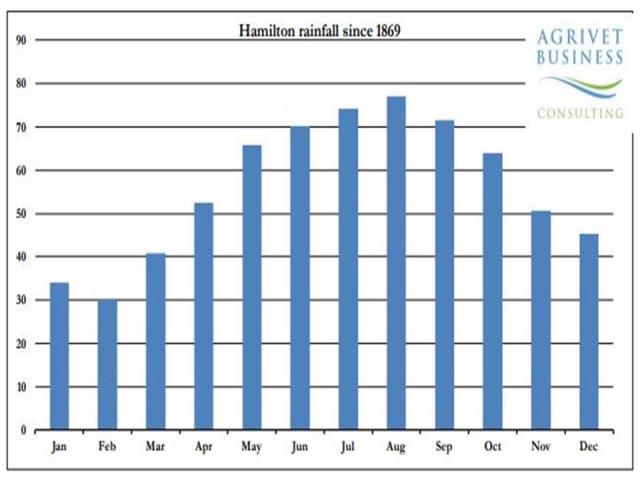High rainfall zone of Victoria
The high rainfall zone is that part of Victoria south of the Great Dividing Range. Store lambs are backgrounded for some time on cheap surplus spring pasture, depending on location and seasonal conditions.
| Zone | Growing season | Description | Pasture types |
|---|---|---|---|
| High rainfall zone
Example: Hamilton
Lambs tend to be Merino crosses (east) or progeny of maternal breed ewes (west) | 8 months (north) to 10 months (south) Winter-dominant rainfall can result in waterlogging in the south. | Lambing typically in July (ranges June to August, and a few producers lamb in September) and weaning October/November (about 35kg).
| North: phalaris, sub clover, some Victorian perennial ryegrass. Hay off early/mid-December.
South: perennial ryegrass, sub clover. Some white clover, annual ryegrass. Hay off early January. In the more southern areas, once pastures hay off, backgrounders use green summer crops eg brassicas such as rape or turnips, grain or even silage or standing crops. |

| Feedstuff | Liveweight gain in grams per head per day (g/hd/day) |
|---|---|
| Hayed-off pastures (Early Jan to early April)
Summer fodder crops |
About 50g/hd/day (even lower growth rates March/April) From 100g/hd/day to 300g/hd/day (prime lambs out of maternal breeds) |
| Feedlot (finishing stage) | Better than 200g/hd/day |
| Total income ($/head) | $120.31 |
|---|---|
| Total costs ($/head) | $95.78 |
| Profit ($/head) | $24.54 |
| Return in investment (%) | 26% |
The obvious location for backgrounding and finishing lambs in WA in a similar way to the high rainfall zone of Victoria would be the southern high rainfall zones west and south of Boyup Brook (long term annual rainfall 650mm), where there is a growing season of eight months or longer. However, the summer period is drier than the high rainfall zone of Victoria.
Backgrounding would require adequate sheep infrastructure in this cattle-dominated area and long season perennial grasses such as Australian phalaris or winter-active tall fescue. As the pastures hay off in November the sheep would need to be fed a backgrounding ration then finished on grain; alternatively standing oat crops or silage could be investigated.
The development of such an enterprise based in this region would open the possibility of sourcing lambs from store lamb producers further inland where growing seasons are shorter. This could allow store lamb producers inland to lamb later and turn off a higher number of lambs per hectare, but still get paid for their store product at profitable levels.
